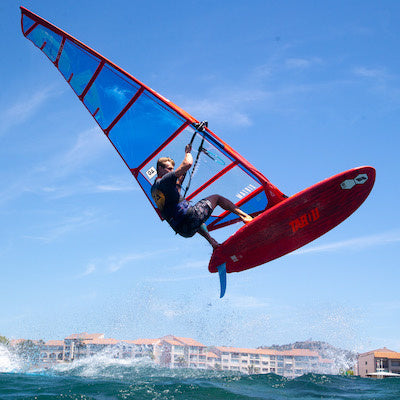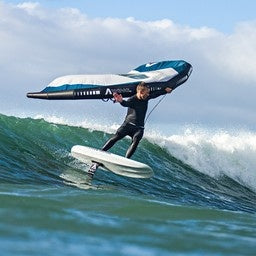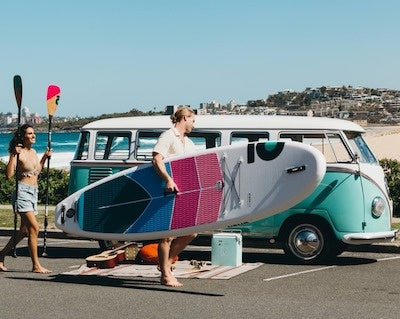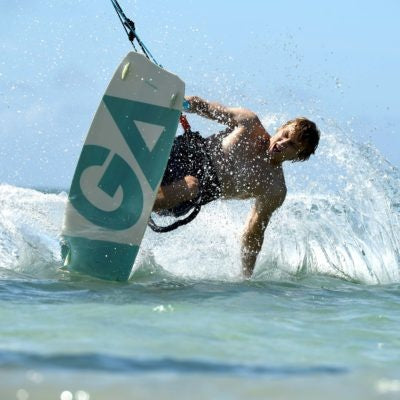Windsurfing Fin Guide
Fins
In windsurfing, the fin provides directional and lateral stability, so choosing the right fin for the riders style, board and conditions is important.
When considering fins, there are a few key features to consider:
- Length
- Shape
- Size
- Arrangement
Fin Length
When sailing in non-planing conditions a larger fin is preferable, assisting the rider to hold ground, as well as make progress upwind if required.
In planing conditions, ‘fin to sail size’ will impact on how the board perform:
- Too large for the sail, the board may feel uncontrollable when powered up
- Too small and the board will be slower onto the plane, an increased tendency to spin out and lose ground downwind

Fin Shape/profile
While fin size or area is the most important factor, fin shape will also change how a board performs:
- A straighter, long, more upright fin, generates more lift with minimised drag, resulting in early planing, good straight line speed and upwind performance
- A swept back or ‘racked’ fin, provides grip, increased carving and turn ability, but generates less lift and therefore slower to plane
A freeride fin often shows the best of both, manufactures combining characteristics bringing the rider increased comfort and control through an upright section with curve in the tip, helping to reduce spin-out and assist control when carving.
If in doubt, most manufactures provide guides to ensure the right size fin is chosen from their range, matching the board design, sail size and conditions the sailor is windsurfing in.

Credit: MFC and K4 fins
Fin size guide
When progressing your windsurfing skills choosing a fin which enables you to maintain ground upwind and encourage planing, being mindful that going too large will cause control issues. The guide below provides a ‘rough’ calculation to assist in choosing the right fin:
Recreational or freeride boards, 110–200 litres:
Multiply sail size by five and add four
For example, 7m x 5 + 4 = 39cm fin
- Increasing to assist early planing, or when sailing with larger sails or wider boards
- Decreasing for more control in stronger winds
Recreational or freeride boards below 110 litres (single strap):
Multiply sail size by five and add two
For example, 5m x 5 + 2 = 27cm fin.
- Increase between 1–4cm if under-powered, slow to plane, spinning out or experiencing difficulties holding ground upwind
- Decrease by 1–4cm, if overpowered, experience the windward rail and/or nose of the board lift
Fin arrangements
Wave and freestyle-wave boards often have different fin arrangements, enhancing suitability for certain conditions or types of sailing.
Single fin: Best for speed and early planing, with least drag.
Twin fin: Positioned side-by-side, providing a ‘looser’ feel, compromises early planing and upwind ability.
Thruster: Set up as three fins all the same size, or two smaller and one bigger. Similar to a single fin, but provides increased stability in chop, earlier planing, (especially when using a larger rear fin), and tighter turning.
Quad: Generally a feature used for dedicated wave boards, enabling a bigger board to be used. The combination enables tight turning, with the stability and drive, but slow to plane.







